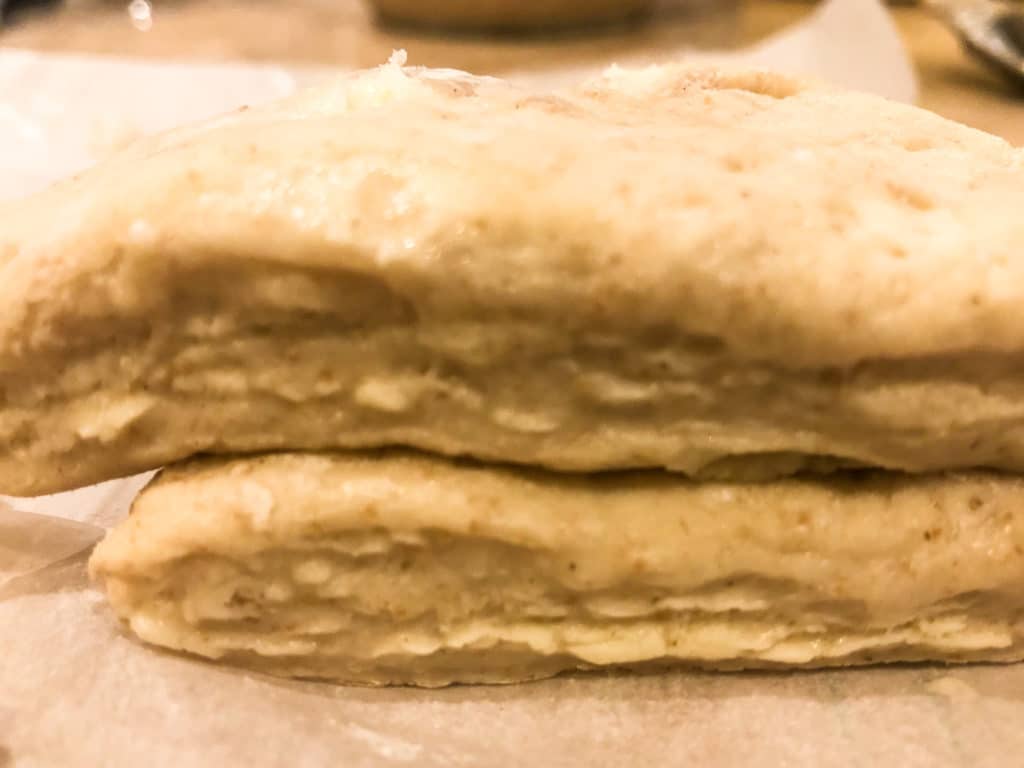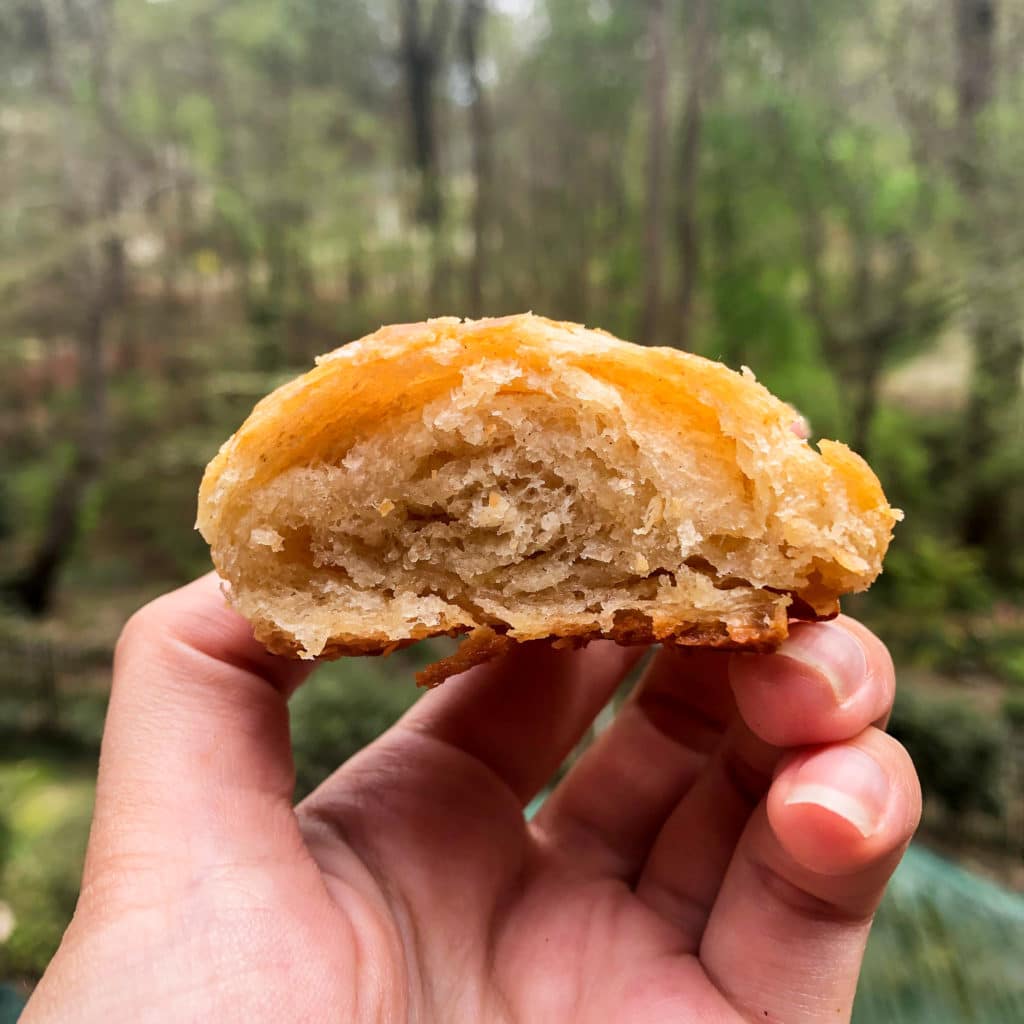(I know croissants are technically pastry not bread, but it’s yeasted, so close enough)
Croissants have been on my to-bake list every since I became hooked to the Great British Baking Show. These wonderful, genius homebakers could make towering cakes and perfect loaves of bread but for the love of all that is good, some would inevitably fail when it came to making pastry.
I knew this would be a challenge, and I embraced it with open arms.
And then as I was measuring out my ingredients, I realized I was all out of instant yeast. No worries though – I switched track to making sourdough croissants instead, using my wonderful homemade starter. Of course, using sourdough starter instead of instant yeast made the process a lot harder, but I was up for the challenge.
Spoiler alert: I wasn’t actually.
First let’s do a Croissant 101
Croissants are made through a process called lamination, where you encase butter in dough, then roll out and fold repeatedly until you have all these wonderful thin layers of dough, butter, dough, butter, dough butter, dough butter, doughbutter, doughbutterdoughbutterdoughbutter… and so on and so forth. It’s a wonderfully tedious process and prone to all sorts of issues.
A successful lamination will allow the butter to melt in between the dough layers as the croissant bakes. This generates steam that puffs up the dough, creating the flaky layers that trick us into thinking we are eating more air than butter.
There is really one golden rule to lamination: you must keep everything cold. Croissant dough dies in the heat.
The process
I choose this recipe: https://www.baking-sense.com/2018/12/14/sourdough-croissants/
Honestly it was the first recipe that popped up with I googled “sourdough croissants.” The author also wrote extensively about her process, so I put my novice croissant making self in her good hands.
- I halve the recipe because 24 croissants is too much for me. This made it a bit more difficult, because I had to adapt how wide to roll out my dough, and math is hard.
- I follow the recipe exactly. Seriously, really carefully because I know that making croissants is all about precision.
- It takes about 2 days. Day 1 is for proofing the dough and laminating, and day 2 is for shaping and baking.
- It doesn’t take long before I know my croissants are horrendously doomed. The butter leaking uncontrollably out of the dough is a solid sign. (read on to get into the nitty gritty technical details for all you croissant nerds)

The results

I already spoiled it, so you know my croissants were extremely sub par. However, I will not call it a fail because I learned a ton from this process.
What went wrong:
- The croissants were dense with really no layers at all. They were more like scones.
- There was little to no rise
- The butter poured out during baking, essentially frying the bottom of my croissants. They tasted greasy and heavy
What went right:
- In the end it’s butter and carbs hot from the oven, so they tasted pretty satisfying
- The sourdough flavor was lovely and unique
What I learned:
- Keep everything cold. The recipe recommended not chilling the dough before beginning lamination, since it would slow down the growth of the wild yeast. I think this was too difficult for a beginner croissant maker, as my dough was too warm from the get go. Seriously though, if the butter melts into your dough it’s game over, so I recommend chilling for at least 15 – 30 minutes as soon as your feel your dough warming up.
- But make sure the butter is not too cold. Turns out if the butter is colder than the dough, it will shatter and break into lumpy little pieces instead of rolling out smoothly. So your butter needs to be cold but pliable.
- Use a French rolling pin. The tapered ends of a French rolling pin give you more control over how much pressure you apply. This is important to getting nice even layers so the butter doesn’t burst out.
- Start with regular croissants, not sourdough croissants. You have a conflict of interest going on between your lamination process and your wild sourdough yeast. Sourdough yeast grows more slowly than regular yeast, so it needs warmth to proof properly. But your croissant dough needs to stay cold to keep the layers. It’s a battle I couldn’t win!
In the end, my croissants were hideous to look at, not bad to eat, and very fun to make. Will I go through this whole tedious process again? Oh you bet! In fact I already have an I can tell you the second try went much better 😉
Do you guys have any croissant tips?

